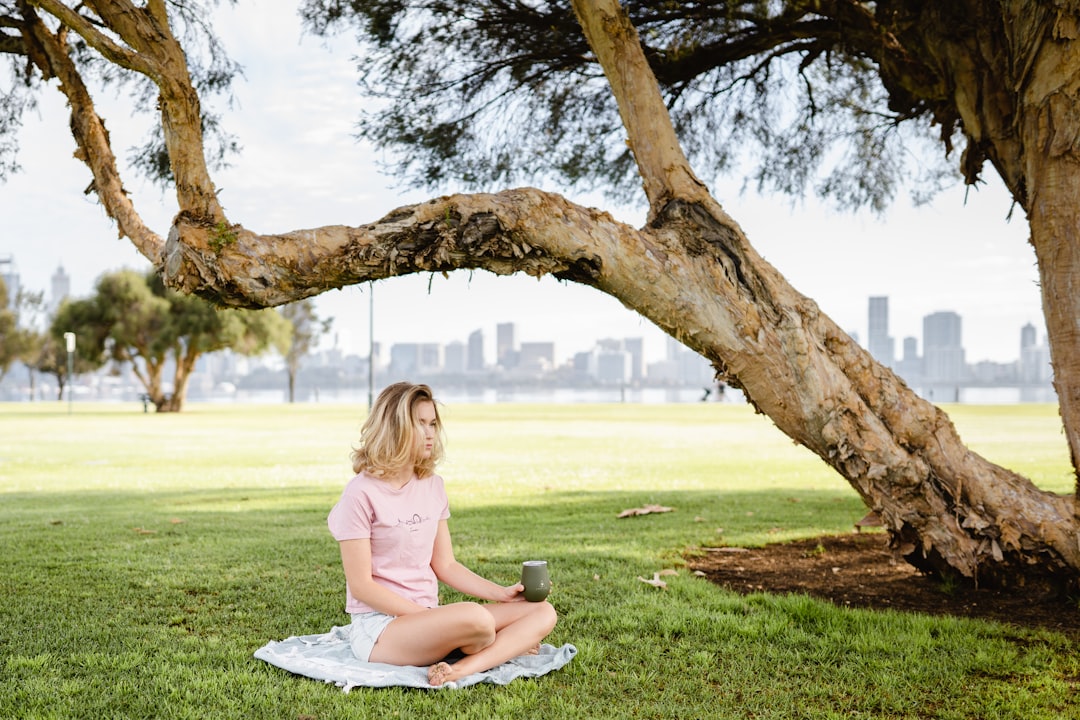In an age defined by packed schedules, endless digital notifications, and striving to keep up with personal and professional demands, cultivating mindfulness can seem like a distant dream. Yet, the benefits of mindfulness — reduced stress, better focus, and a deeper sense of well-being — are exactly what we need amid the chaos. Even the busiest lives can make space for mindful moments. This article will introduce proven strategies for infusing mindfulness into a hectic routine, helping you transform ordinary days into more peaceful, fulfilling experiences.
Understanding Mindfulness: More Than Just Meditation
Mindfulness is the practice of paying purposeful attention to the present moment, without judgment. While many associate mindfulness with long meditation retreats, the truth is that it’s a flexible approach accessible to everyone, regardless of time constraints. Mindfulness isn’t about stopping thoughts or clearing your mind; it’s about noticing life as it unfolds — whether that’s savoring a sip of coffee or truly listening during a meeting.
Key Benefits of Mindfulness for Busy People
- Stress Reduction: Mindfulness helps you respond to daily pressures with greater calmness and clarity.
- Enhanced Focus: Regular practice strengthens your ability to concentrate, even in distracting environments.
- Emotional Resilience: Mindfulness fosters emotional balance and patience, reducing reactivity.
- Greater Self-Awareness: It illuminates habitual patterns, empowering you to make conscious choices.
Making Space for Mindfulness in a Fast-Paced World
One of the myths about mindfulness is that it requires large blocks of uninterrupted time. In reality, the most sustainable practices are those that fit seamlessly into your existing rhythm. Let’s explore practical ways to incorporate mindful moments into busy days.
1. Start Small: Moments, Not Minutes
If committing to 20-minute meditations feels daunting, begin with micro-moments of mindfulness. Research shows that even brief pauses can have calming effects on the nervous system. Try:
- Mindful sighs: When you notice tension, take a slow, deep breath and gently exhale.
- Mini body scan: Notice the sensations in your body for 30 seconds, from your feet up to your head.
- Present-moment check-in: Whenever you switch tasks, pause to ask, “What am I feeling right now?”
2. Use Everyday Activities as Mindful Anchors
Mindfulness doesn’t require a special cushion or quiet room. Turn routine activities into opportunities for awareness. Examples include:
- Morning shower: Focus on the sensation of water and the scent of soap. Notice how your body feels as you wake up.
- Brushing your teeth: Pay attention to each movement, the taste of toothpaste, the sound of bristles.
- Commuting: Observe the sights, sounds, and physical sensations of your journey, whether you’re driving, cycling, or walking.
- Eating: Practice mindful eating by savoring the flavors, textures, and aromas of your food, even if it’s a quick lunch at your desk.
Mindful Breathing: Your Portable Stress-Relief Tool
The breath is always with you — and it’s a powerful anchor to the present moment. Mindful breathing can be practiced anywhere, anytime. Here’s a technique to try:
- Sit or stand with your back straight but relaxed.
- Close your eyes or soften your gaze.
- Inhale slowly through your nose for a count of four, feeling your belly expand.
- Pause for a brief moment.
- Exhale gently through your mouth for a count of six.
- Repeat for three to five breaths, noticing the sensations of breathing.
This short breathing practice signals safety to your body, easing tension and sharpening focus. Use it before a meeting, during a stressful commute, or as a transition between tasks.
Building Mindfulness into Your Daily Routine
Consistency matters more than duration. The key is to make mindfulness a regular, even automatic, part of your day. Here are effective approaches for busy people:
Set Mindful Intentions Each Morning
Begin each day by setting a simple intention related to mindfulness. For example, “Today, I will pause and take three mindful breaths each time I check my phone.” This gentle reminder can help keep awareness alive amid busyness.
Pair Mindfulness with Existing Habits
“Habit stacking” is a behavioral technique where you attach a new practice to an established habit. For example:
- After pouring your morning coffee, pause to feel its warmth and inhale its aroma.
- When you wash your hands, notice the temperature of the water and the sensation on your skin.
- Before entering a meeting, take a few conscious breaths and feel your feet on the floor.
These small connections make mindfulness less likely to be forgotten amid a packed schedule.
Leverage Reminders and Technology
Set reminders on your phone or computer with cues like, “Pause & breathe.” There are many mindfulness apps offering guided practices as short as a minute. Consider placing visual reminders (like a sticky note on your monitor) to prompt present-moment awareness throughout the day.
Mindful Communication in a Distracted World
Mindfulness isn’t just an internal practice — it also transforms our relationships. In a multitasking culture, it’s easy to listen only half-heartedly or respond reflexively. Mindful communication brings empathy and clarity to our interactions by encouraging presence with others.
Practicing Mindful Listening
- Before entering a conversation, take a conscious breath and set an intention to be present.
- Listen without planning your reply while the other person is speaking.
- Notice your urge to interrupt or judge, and gently bring your focus back to the speaker’s words and emotions.
- Respond thoughtfully, using pauses to consider your words.
Even one mindful conversation each day can improve understanding and reduce conflict, both at work and at home.
Overcoming Common Obstacles to Mindfulness
Busy lives bring unique challenges to maintaining a mindfulness practice. Here’s how to address some of the most common barriers:
“I Don’t Have Time.”
Mindfulness is about how you engage with your life, not how much time you set aside. Even a few seconds of awareness count. Remember: Frequency matters more than duration. Micro-practices scattered throughout your day often add up to more than occasional long sessions.
“My Mind Wanders Too Much.”
Distraction is completely natural, especially when you’re busy. Each time you notice your attention drifting, gently steer it back without self-criticism. Over time, the mind becomes more focused and less reactive.
“I Forget to Practice.”
Use cues throughout your environment — alarms, sticky notes, or habit-stacking — to trigger mindful moments. Some people find it helpful to link mindfulness with common transitions, such as shutting off your computer, walking to meetings, or putting on your shoes.
Mindfulness on the Go: Practices for Commutes and Waiting Times
Busy people spend a surprising amount of time in “in-between” moments — commuting, waiting for an appointment, standing in line. Rather than viewing these as wasted minutes, transform them into opportunities for mindful presence.
Practice Ideas:
- Walking mindfulness: Feel your feet touching the ground, the rhythm of your stride, and the sensations of the air on your skin.
- Traffic breathing: Instead of getting frustrated, notice your breath and surroundings at each stoplight.
- Waiting-in-line scan: Tune into the sounds, sights, and physical sensations while waiting, resisting the urge to reach for your phone.
- Mindful listening to music or podcasts: Really hear the layers of sound and the feeling they evoke.
Mindfulness Tools: Apps, Resources, and Practices for Busy Schedules
Technology can be an ally for mindfulness if you use it intentionally. Here’s how to leverage helpful resources without becoming overwhelmed:
Recommended Mindfulness Apps
- Headspace: Renowned for its approachable, user-friendly guided meditations and mindful moments for busy people.
- Calm: Offers soothing soundscapes and micro-meditations tailored to time-crunched days.
- Insight Timer: Features thousands of brief practices, from one-minute breathing breaks to longer body scans.
Suggested Reading
- Wherever You Go, There You Are by Jon Kabat-Zinn
- The Mindful Way Through Stress by Shamash Alidina
- Radical Acceptance by Tara Brach
Brief articles, podcasts, or audiobooks can also reinforce your motivation and offer new techniques to try.
Making Mindfulness a Lifestyle, Not a To-Do List Item
The goal of mindfulness isn’t to add another task to an already crowded schedule. Instead, it’s about shifting your relationship to your everyday experiences. When you make mindfulness a way of being, rather than a box to check, even the busiest periods of your life can become more centered and fulfilling.
Embracing Imperfection
There will be days when you forget or feel too busy; that’s part of the process. Mindfulness is about returning — again and again — to presence. Each moment is an opportunity to begin anew, with patience and self-compassion.
Celebrating Small Wins
Notice the subtle changes that come from even tiny practices. Perhaps you catch yourself before reacting in anger, feel more engaged during a conversation, or simply enjoy your lunch more fully. These are genuine shifts in the quality of your everyday life.
Conclusion: Mindfulness is Within Reach, No Matter How Busy You Are
Living a mindful life isn’t about retreating from your responsibilities or embarking on a spiritual quest. It’s about weaving awareness, compassion, and presence into the very fabric of your everyday. The truth is, you don’t need more time in your day—just more attention in your moments.
By starting small, anchoring mindfulness to your current habits, and embracing both the challenges and the rewards, you can transform even the busiest schedule into an opportunity for presence, resilience, and joy. Your mind — and your life — will thank you.





